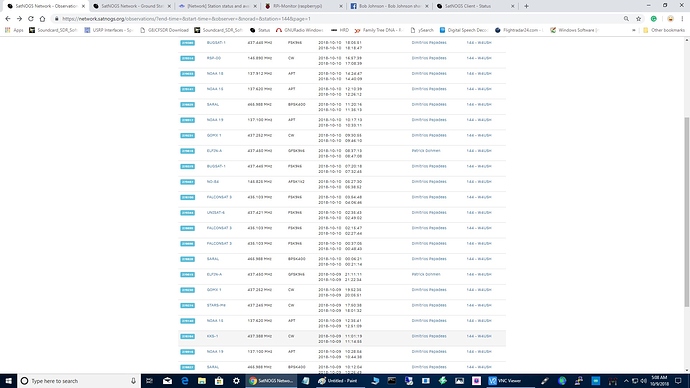Hi @K3RLD,
Thanks for opening this thread, indeed the last months the number of the stations and the one of observers has grown up. In the beginning when we had a couple of station, scheduling was a job for a couple of people (sometimes we refer to them as observation team) who had a main role for organizing scheduling, by spreading observations among satellites, following special events and also try to keep up with the requests of station owners, like preferred satellites or less observations due to bandwidth issues.
Today, more stations means more observers which means that scheduling becomes a little unorganized and sometime touches the edge of abusing the system. Until now the focus was to help observers to schedule and keep busy the stations, but as you described we need to make changes to help station owners to have better control of their station and be useful for the network.
The ideal system and this is the one we try to reach with slow steps (for several reasons) is an automatic scheduling algorithm which will consider station characteristics, owner’s requests and preferences and satellites observation needs in order to achieve the best utilization of the network. However we are far from it.
So, we need to do another step on this direction. I’ll try to describe the issues and suggest some solutions that can be implemented almost right away. If there are any extra issues, please let me know.
- Owner wants always to follow some satellites
Example: As an owner I want to observe NOAAs on every pass above my station
Solution: Creating a list of preferred satellites for each station. Satellites in this list will be automatically scheduled before other observers get the slot of the pass
- Owner wants to be able to schedule satellites dynamically, even if someone else has already scheduled something
Example: As an owner I want to observer this NOAA pass because there are rare weather conditions
Solution: The owner will be able to overwrite already scheduled observations. This means that if a pass scheduled from the owner overlaps with passes from other observers then the latter will be removed. This makes the manual process of deleting one by one observations of other observers and then scheduling the one that owner wants automatic. The manual process is available already so make it automatic will help us save some time.
In this point I want to make a remark about deleting future observations. As we all offer our stations’ spare time to the network, a scheduled pass on a station means that there are good reasons for it and that observer was sure that the slot was available on this station. It is kind of unfair to have a free slot and then delete a scheduled observation on this slot. if a pass is really important for the owner it would be better to mark this slot as unavailable and let observers to know and schedule their pass in another station. With that remark I move to the next problem.
- Owner wants to mark his/her station as unavailable for some timeslots
Example: As an owner I want to make changes in my station, or I want to use it manually from this datetime to this datetime.
Solution: I’ve described it with details in this thread: [Network] Station status and availability
The above were a result of quick brainstorming and I would like to hear your opinion on them.

 . So they get some priority. Also we have 128 satellites in VHF instead of 328 in UHF, and 28 of the 57 online stations have only VHF antennas (+ those with both VHF and UHF), so I think it isn’t that strange to see many NOAA observations.
. So they get some priority. Also we have 128 satellites in VHF instead of 328 in UHF, and 28 of the 57 online stations have only VHF antennas (+ those with both VHF and UHF), so I think it isn’t that strange to see many NOAA observations.